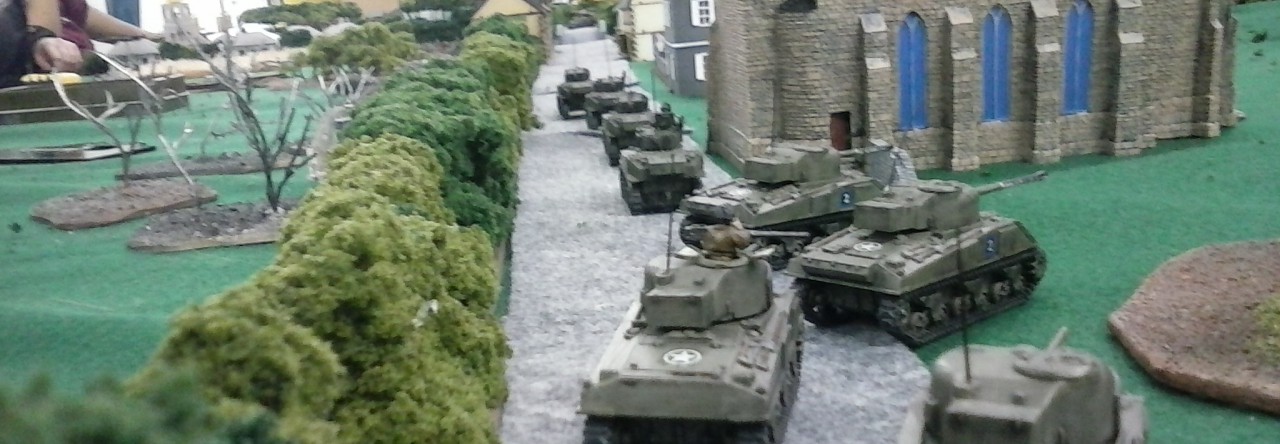As many of you may know, there are several facets to this hobby of historical wargaming. The painting and creating of your miniature figures and vehicles allow us to show our creativity and artistic ability to craft gaming scenes that are amazing to see. The fascinating thing is that, ultimately, these are gaming pieces, similar to a cardboard chit, plastic checker, or piece to a chess set. However, with our figures and vehicles, many of us go to varying lengths to achieve a greater sense of realism in a model figure, or weathering and battle damage on a vehicle. Seeing the fruits of a person’s efforts on their armies is quite amazing. There are a myriad of opinions on manufacturers and paint companies, as well as the increasing use of 3D printing technology in the hobby. I would like to share a few of my observations as a relatively novice wargamer and from the perspective of one who engages in the hobby with visual impairment that can impact my ability to craft in it.
When I first ventured into the hobby, buying the Open Fire! set for Flames of War version 3, I had a little bit of experience with plastic model kits and painting, but at a much larger scale than 15mm. I also didn’t have paints and glue or plastic cement to put the kits together. I asked a former acquaintance that also wargamed and started me in the hobby to help me out by building and painting the set for me. The first few months in the hobby saw me using Open Fire to start out, but I soon began acquiring new additions to it to grow my forces, starting with the Germans. I then decided to overcome my apprehension to building and painting and jump into it.
When I asked about paints, I was urged to get Vallejo model paints, which are acrylic and cover a wide range of shades. Fortunately, at the time, my local Hobby Lobby carried what I needed (I have since found that the Vallejo selection in Hobby Lobby is not what I need anymore, as they switched to other shades, and, now charge $4.99 per bottle, so I now order online). I find the paints relatively easy to work with, especially since they come in eye dropper bottles, which allow for easier control over how much is used, which is nice if mixing is needed. Another strong reason to use Vallejo is that I have found many resources on painting historical miniatures for World War II use Vallejo colors, so you will at least know you have the proper color. Now, I will say I only have used Army Painter washes, but if you have any insights into washes, I’d be delighted to hear them.
I have found the painting process to be mostly fun and relaxing, although there are times it can be a bit time consuming, but I state this because I currently do not have an airbrush for doing things like priming and base coating. This prevents me from really cranking out the minis in an assembly line fashion, but I get done what I can when I am able to paint. I do enjoy the challenge of painting camouflage on a vehicle and weathering it, but do find the finer detail work tricky with my poor vision, especially on 15mm kits.
To wrap up thoughts on painting, I will say that you should go and watch some painting videos on Youtube and articles on various blogs and gaming websites. That’s how I learned and have just improved as I have practiced.
Now, I will say that I have assembled kits from Battlefront (Flames of War), Warlord Games (Bolt Action), Plastic Soldier Company, and Zvezda. They all have their own pros and cons. I have assembled all plastic kits, kits with plastic and resin components, and resin and metal kits, with similar feelings. I have to say I think I like resin and plastic kits for vehicles, as you don’t have to put the bodies together as much, though there can be a few fiddly little pieces, plus, the resin kits sometimes have unique detail features lacking in all plastic kits. Since most of my vehicle builds have been tanks, I have to say that I am not as much a fan of metal, as working with the barrels and the potential bending of them after completion is frustrating to me.
Often, I am left questioning some of the designer’s decisions that went into crafting the pieces for the kit, especially on 15mm, but also a few 28mm kits. I have poor eyesight, so working with tiny parts is a challenge for me and I wonder why some parts are cast separately that are so tiny on such a small-scale vehicle. Yes, I know some of this is because of differences in variant, but I am talking things like lights and fenders that are universal parts.
Since moving to Bismarck, I have become acquainted more with 3D printing and its potential in the hobby. I have seen some results floating on Facebook for a few years now, but when one of my gaming buddies here got a printer and began making stuff on it, our group has begun to have vehicles made via 3D printer and the results are quite interesting.
What I do like about the technology is the ability to crank out a vehicle cheaper than what I could ever get on the web. My friend printed me 15 Panzer III’s so I’d have some good mid-war tanks to face his Soviets for Flames of War games we began playing and they cost me roughly $2 per tank, which you can’t touch from even Zvezda. I recently had some Opel Blitz trucks and a couple variants of German half-tracks printed too and was impressed with the results.
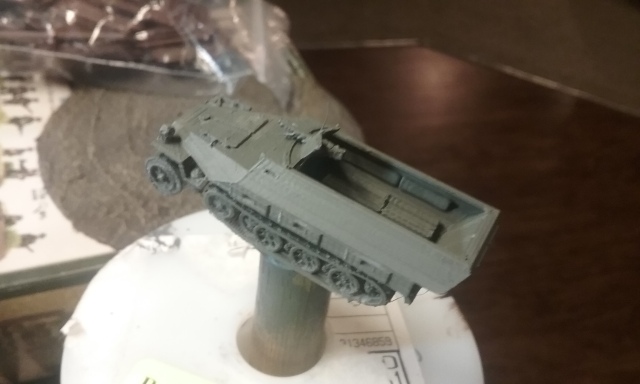
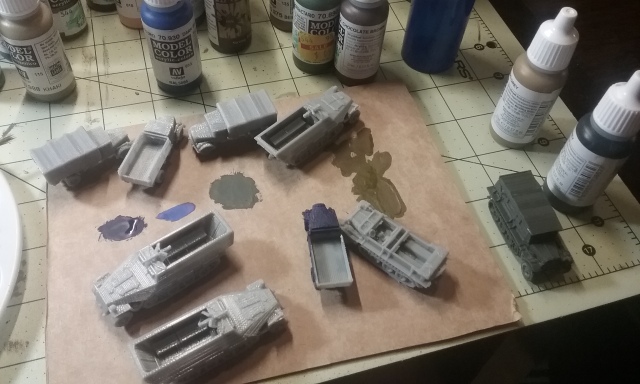
One thing that is fun is that there are different colors of filament available, so my buddy had hot pink to experiment with and I had to have him print me a Panther and Jagdpanther in 28mm scale (who doesn’t want a pink Panther).
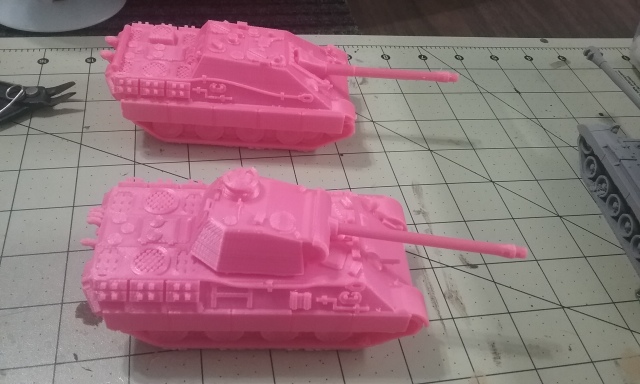
As you notice, there are some details to the finished product and, in the case of the Panther, only the body and turret are two separate pieces. Each of these cost about $10, where the cost of a similar kit could be between $20-50, depending on manufacturer for a similar one.
I have found painting them to be a relative breeze and then at a distance on the tabletop, you won’t likely notice that they are that different from a manufacturer’s plastic or resin kit.
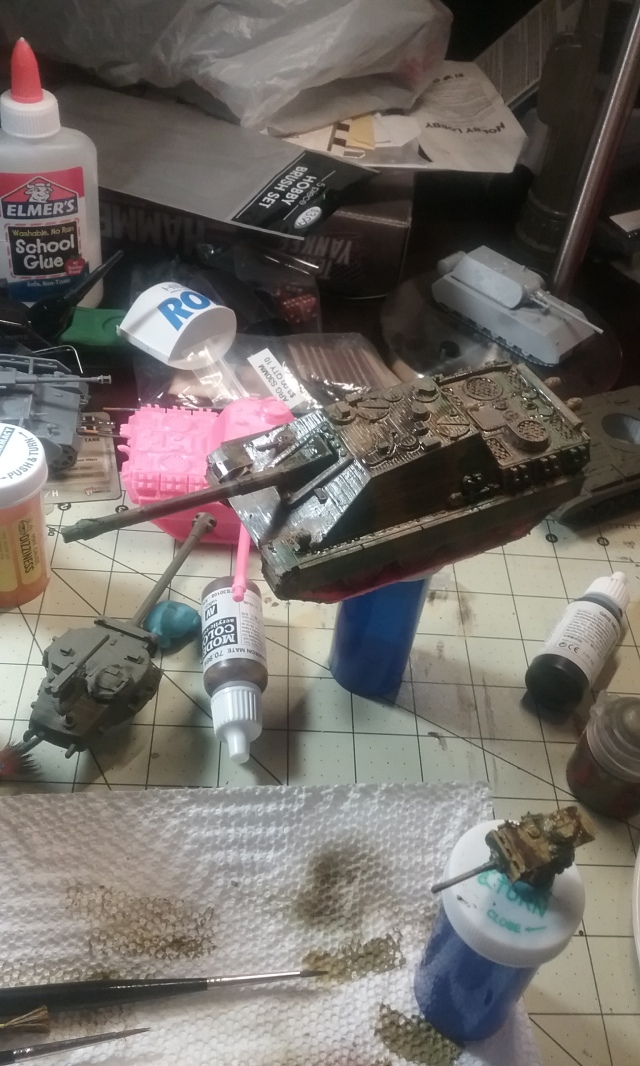
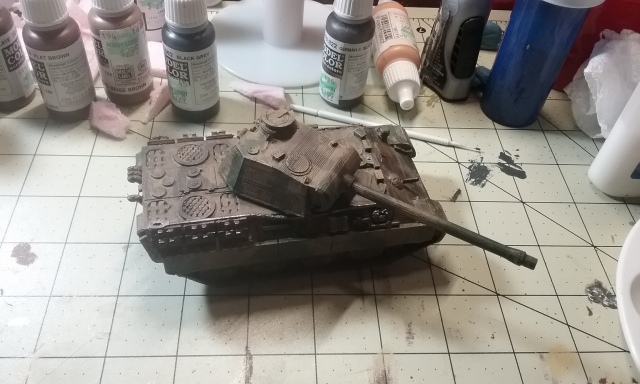
Here are a couple more examples of some finished painted vehicles and buildings off a 3D printer.
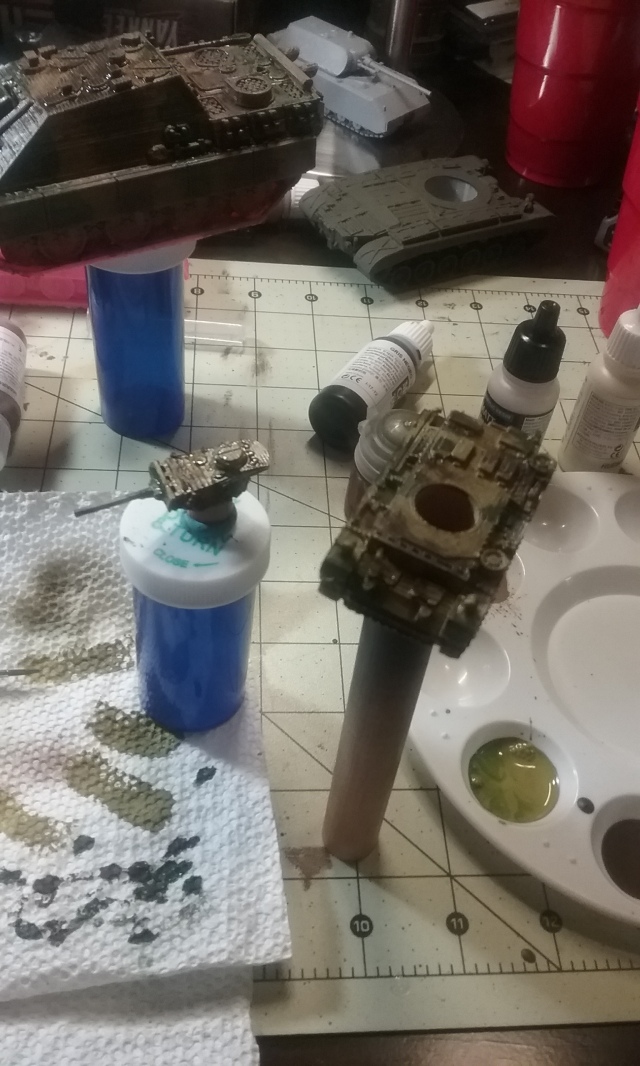
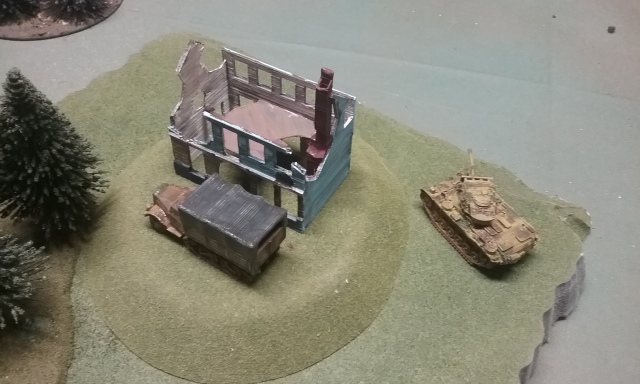
As you can see, there is a great potential for 3D printing to reshape wargaming, as a hobby. As the technology improves, I think gaming companies may choose to focus on their rules and game-specific accessories (tokens, markers, etc.) and perhaps go into crafting 3D files too. The biggest thing I like is that vehicles are often only one or two pieces, so, after cleaning them up of the excess filament, they are ready for paint.
That said, there are some things to consider with 3D printed stuff. First, you have much more clean up on the finished product than with a model kit, as the filament prints differently than a plastic sprue coming off an injection mold. One big result is the print lines being visible, but this is usually only when looking at it up close. Second, is that adding battle damage via chipping or cutting a model piece is a bit trickier, as the 3D print is one piece with a largely hollow interior. Finally, you do lose some details, especially on the tank treads and undersides of the turrets and vehicles themselves, but considering these are essentially gaming pieces, not scale models, this is a minor thing for me anyway.
Personally, I can’t argue with the results I have seen in terms of vehicles and buildings and the overall difference in cost. Further, the ability to print only one or two needed vehicles for a gaming session, which has become the case with I Ain’t Been Shot Mum, is quite nice, as we can get it sooner than having to order online and wait for shipping and assembling it.
Will 3D printing take over the hobby? No, I don’t think completely, as there are still limitations, as printing figures is still not quite as good compared with the gaming company kits. Plus, you also have the issue of loyalty to brands, but it certainly has its applications in the hobby. Am I completely converted to the 3D camp? Not quite, as I don’t plan to buy a printer myself (don’t have the money for one anyway), and, there are still things the gaming companies can pull off that 3D file makers can’t, like certain proprietary things. However, for a basic, run-of-the-mill vehicle needed in volume for your army, if you are not picky on details and just want to get a bunch of things table ready, if you have a friend that has one, 3D printing offers a cost-effective method to expand an army.
Until next time, keep your brushes clean, and keep rolling those sixes.
